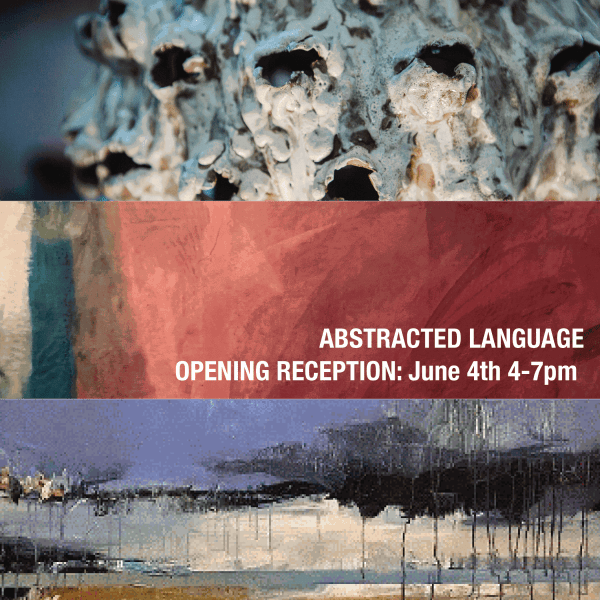John Ratajkowski
Growing up in the 1950’s in the seaside town of Coronado, California across the bay from San Diego, American painter John David Ratajkowski remembers “being able to draw anything I could see.” Fascinated as a boy by all variety of materials, Ratajkowski was early on adept at painting, sculpture, ceramics, printmaking, lithography. He recalls that the key attraction for him in every case was the compelling desire “to make”—whatever the media. His exceptional drawing ability found expression in a series of pen and ink drawing of Black American blues musicians published as illustrations in a seminal work on American blues.
Early on, though, Ratajkowski knew his “true love” was painting. Funded by a grant from the National Endowment for the Arts, an exhibition of remarkable large black and white portraits of Alzheimer’s patients testifies to Ratajkowski’s capacity to render the figure realistically, even as his interpretation of his subjects demonstrates the unique power of his vision.
Key to Ratajkowski’s work is travel without which he explains he would become numb to his surroundings. His longtime interest and enchantment with Mexico began in his youth when he grew up near Baja. Living and exhibiting in Poland and Ireland and the UK, impacted Ratajkowski’s artistic perspective.
The current exhibition at BFree Studio in La Jolla, California, “Painting and Clay: Abstracted Language” showcases Ratajkowski’s facility with color and form. In his view, the painterly problems in abstract painting are distinct from those in figure work. In this series created for the BFree Studio, Ratajkowski has taken fragments from his previous works and used this as the basis for entirely new paintings.
Ratajkowski’s abstract work took him to Ireland for a two-year sabbatical to work at non-figurative landscape, investigating the Celtic ruins in that terrain. He was invited later to be resident artist by “Dom Polonia”, a national arts council in Poland, and then to Bulgaria to exhibit his abstract paintings it its Triennial show. Later, combining this commitment to abstract painting with his interest in varied media, Ratajkowski traveled through Eastern Europe photographing and sketching Gypsy communities and producing a series of painted collages of Gypsy life. The exhibition of this series was later sponsored by the Lipinsky Institute for Judaic Studies and presented through a grant from the California Council for the Humanities in a month-long exhibition with accompanying symposium on Gypsy history and culture.
The concentration on abstraction allowed Ratajkowski to explore a number of new possibilities in form and color. In one series, for example, the abstract paintings progress from flat to “deep,” dark to light, form to the deliberate abandonment of form. A pivotal piece in this series features the addition of collage to what are exclusively painted surfaces. Cotton duck fabric and the fine tarleton used to rub down etching plates were applied to create a translucent effect. One critic looking at a single piece from this exhibition was convinced that it was hung over a window or some artificial light source because it appeared to radiate light. Other exhibitions showcased work which replicated the effect of natural forces on the environment—the bas relief, for example, of eroded sandstone cliffs.
Turning again to the figure, Ratajkowski’s experiments in abstract work have powerfully impacted his portraiture. In a series of portraits of Jewish literary figures depicted in film, Ratajkowski has brought the techniques developed and perfected in his abstract work to bear on his creation of the portrait. These new works are anything but the static image we associate with portraiture, and instead are infused with movement, a dynamism that communicates the ethos of the subject’s situation and story. Using some formulae over five centuries old, mixing dry pigments to make his own paint, Ratajkowski invented his own version of these ancient hues through the application of waxes and resin, heating the canvas surface to control viscosity, and giving the paintings a velvety and layered finish. The result is a lushness that virtually projects out from the canvas to the viewer’s eye.
The need to absorb the influences of different cultures paired with his fascination with material and technique manifests itself in all aspects of Ratajkowski’s life: for the last three decades he has restored two old houses, one in the pueblo of Sant Joan, Mallorca, and the other in Bantry, County Cork, Ireland. Ratajkowski explains that the rebuilding of the houses is his “play,” three-dimensional practice for his artmaking. He now lives part time in West Ireland. Exhibited in the US and the internationally, Ratajkowski’s work appears in numerous collections around the world.
-

John Ratajkowski Artist Talk
22 Jun 2022Join us Wednesday June 22nd, 5-7 PM for an artist talk with John Ratajkowski! This is an amazing opportunity to hear more about John's current...Read more -

John Ratajkowski Book Signing
11 Jun 2022Join us Saturday June 11th, 5-7 PM for a book signing, of John Ratajkowski's book 'Cow Tuesday.' Collected in this handsome, 10 “ x 10”...Read more -

Painting and Clay: Abstracted Language Opening Reception
4 Jun 2022Join us Saturday June 4th, 4-7 PM, for the opening reception for Painting and Clay: Abstracted Language! This is a fantastic opportunity to engage with...Read more


